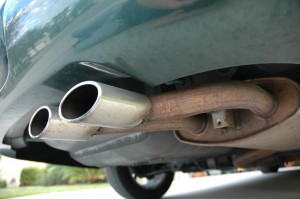 NASA has used thermoelectric energy, or the conversion of waste heat to electricity, for decades to power spacecraft and the Mars Science Laboratory Rover. However, thermoelectric energy has attracted minimal attention in the alternative-energy world due to its limited commercial viability, until recently. Last year, Michigan State University (MSU) with the support of the Lawrence Berkley National Lab developed a new class of thermoelectrics using a compound called tetrahedrite that is believed to be more cost-effective and has the potential for everyday use.
NASA has used thermoelectric energy, or the conversion of waste heat to electricity, for decades to power spacecraft and the Mars Science Laboratory Rover. However, thermoelectric energy has attracted minimal attention in the alternative-energy world due to its limited commercial viability, until recently. Last year, Michigan State University (MSU) with the support of the Lawrence Berkley National Lab developed a new class of thermoelectrics using a compound called tetrahedrite that is believed to be more cost-effective and has the potential for everyday use.
One start-up finding success building on the findings from MSU is Alphabet Energy. They have developed a stand-alone converter that converts hot-exhaust, often from a car’s tailpipe, into electricity, resulting in a more efficient vehicle. According to Alphabet Energy, these modules can deliver up to 850 watts of power and can also be stacked together to capture heat from a variety of larger sources, including a power plant chimney.
Questions remain, however, about the scalability of these technologies. According to Michigan State University, thermoelectricity has previously failed to be commercialized because of low efficiency, high costs, and the required use of rare elements. Despite billions in investment from companies such as KPCB, BP Alternative Energy, and Mitsui Ventures, there has been limited success to date. The Department of Energy’s Energy Efficiency and Renewable Energy (EERE) program’s investments in waste heat energy have the goal of making overall vehicle fuel economy at least 7.5 percent more efficient by 2020. However, EERE recognizes that research still needs to overcome numerous technical barriers, including scaling-up of technology and availability of materials.
I think the first major deployment of these technologies would be in transportation. Ricardo, an automotive technology company, has advocated for years that fuel efficient design should be coupled with… Read more »
Heat exchangers are included on most fossil fuel power plants so that waste heat is recycled back to the boilers and used to generate more electricity. The fact that so… Read more »